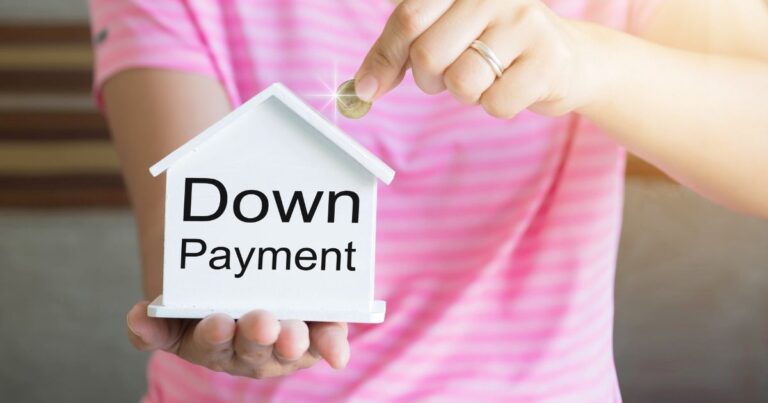The purchase of a home is one of the significant investments you will make in your lifetime, requiring meticulous planning and preparation. The down payment is one of the most important aspects of purchasing a home. It is the quantity of money you pay upfront towards the purchase price. It can be difficult to save for a down payment, but with the proper strategies and mentality, it is possible to reach your goal. In this short post, we will discuss some strategies for saving for a house down payment.
What is a Down Payment?
A down payment is a kind of upfront payment made toward the purchase price of a property. Typically, the down payment is a percentage of the total purchase price, and the remaining amount is financed through a mortgage. The down payment serves as a security deposit for the lender, reducing the risk of default on the loan.
The standard down payment required for a home purchase is 20% of the total purchase price. However, there are other options available that require a lower down payment, such as FHA loans, which require a minimum of 3.5% down payment. Keep in mind that a lower down payment may result in higher interest rates, private mortgage insurance (PMI), and additional fees.
Why is a Down Payment Important?
A down payment is essential because it helps reduce the lender’s risk and demonstrates your commitment to the purchase. A higher down payment can result in lower interest rates, lower monthly payments, and the ability to pay off your mortgage faster. A larger down payment also means you’ll have built up more equity in your home from the start, which can be valuable if you need to borrow against it in the future.
Tips and Tricks on How to Save for a Down Payment
- Set a Savings Goal: Setting a realistic savings goal is the first step to saving for a down payment. Determine how much you need for a down payment based on the purchase price of the home you’re interested in and the type of mortgage you plan to get. Once you have a goal in mind, create a budget and determine how much you can save each month towards that goal.
- Cut Down on Expenses: Expense reduction is one of the most effective methods to save money. Examine your spending behaviors carefully and identify areas where you can make reductions. Consider canceling subscription services, eating out less, or finding cheaper alternatives to your current expenses.
- Increase Your Income: Increasing your income can help you save for a down payment faster. Consider taking on second employment or selling unwanted items. Additionally, you can request a raise or promotion in your current position. Any additional earnings can be put towards your down payment savings.
- Use a High-Yield Savings Account: It can help you generate a higher rate of return on your savings. Look for a savings account with a high-interest rate and no fees. Many online banks offer high-yield savings accounts with competitive interest rates.
- Take Advantage of Down Payment Assistance Programs: Many down payment assistance programs are available to first-time home buyers and low-income households. These programs offer grants, loans, and other forms of financial assistance to help with the down payment and closing costs. Research available programs in your area and determine if you’re eligible.
- Consider a Gift from Family: If you’re fortunate enough to have family members who are willing and able to help, consider accepting a gift towards your down payment. Keep in mind that the gift must be documented, and you may be required to provide proof that the funds were a gift and not a loan.
Ways to Save for a Down Payment
Create a budget
When saving for a down payment, one of the most essential things you can do is to create a budget. It allows you to see where your money is going and identify areas where you can cut back. Start by tracking your expenses for a few months and then use that information to create a budget. Make sure to include your income, expenses, and savings goals.
Cut back on unnecessary expenses.
Once you have established a budget, search for ways to reduce unnecessary expenses. For example, you could try cooking at home instead of eating out, canceling subscriptions you don’t use, or taking public transportation instead of driving. Every dollar you save can go towards your down payment.
Open a high-yield savings account.
Opening a high-yield savings account is a fantastic method to start saving for a down payment. Your money will grow faster in these accounts since they often provide higher interest rates than conventional savings accounts. When creating a new account, some banks also provide bonuses, so be careful to compare shops to discover the best offer.
Set up automatic transfers.
Setting up your automatic transfers from your checking account to your savings account is one of the most convenient ways to save for a down payment. You can choose how much to transfer and how often, so you can customize it to fit your budget. This way, you won’t have to think about saving money – it will happen automatically.
Use windfalls wisely
Consider increasing your down payment money if you have a windfall, like a bonus at work or a tax refund. Although it could be alluring to spend the money on something enjoyable or frivolous, keep in mind that every dollar you put aside today will go toward achieving your goal of becoming a homeowner.
Consider a side hustle.
Consider launching a side business if you need help saving money for a down payment on your existing salary. This could be anything from freelancing to pet-sitting to selling items online. Even if you only make a few extra hundred dollars a month, that can make a big difference when it comes to saving for a down payment.
Ask for help
Finally, do not be afraid to ask for help. Family members who can and are willing to contribute to your down payment can make a significant difference. Just make sure to have a plan for paying them back and document the gift properly to satisfy your lender’s requirements.
Final Thoughts
Even though saving for a down payment can be challenging, it is one of the most important actions you can take if you want to buy a house. By following these tips & tricks, you can simplify the process and move closer to realizing your goal of homeownership. Remember, every dollar you save now will pay off in the long run.
FAQs
What is a down payment on a house?
A down payment is the upfront cash payment made by a buyer for a part of the overall cost of a home. It is not funded through a mortgage and is often quoted as a percentage of the purchase price.
How much down payment do I need to buy a house?
Depending on the type of mortgage and the lender’s criteria, different amounts of down payment are needed. Generally, a down payment of at least 3-5% of the purchase price is required for conventional loans, while FHA loans may require a down payment of as little as 3.5%.
How can I save for a down payment if I have student loans?
If you have student loans, saving for a down payment can be challenging. However, there are some basic tactics you can employ to ease the process. These include creating a budget, refinancing your student loans to lower your monthly payments, and using an income-driven repayment plan to lower your payments.
Can I use gift funds for a down payment on a house?
Yes, you can use gift funds for a down payment on a house. However, the lender may have specific requirements for documenting the gift, and you may need to provide a gift letter stating that the money is a gift and not a loan.
Is it better to put down a larger or smaller down payment?
This question has yet to have a universally applicable solution. You can get your interest rate lowered, have lower monthly payments, and pay off your mortgage sooner if you make a higher down payment. However, it can also tie up more of your cash upfront, which can limit your flexibility. Ultimately, the decision will depend on your financial situation and personal preferences.
Visit our website ExpressMortgageQuotes.com to learn more.




